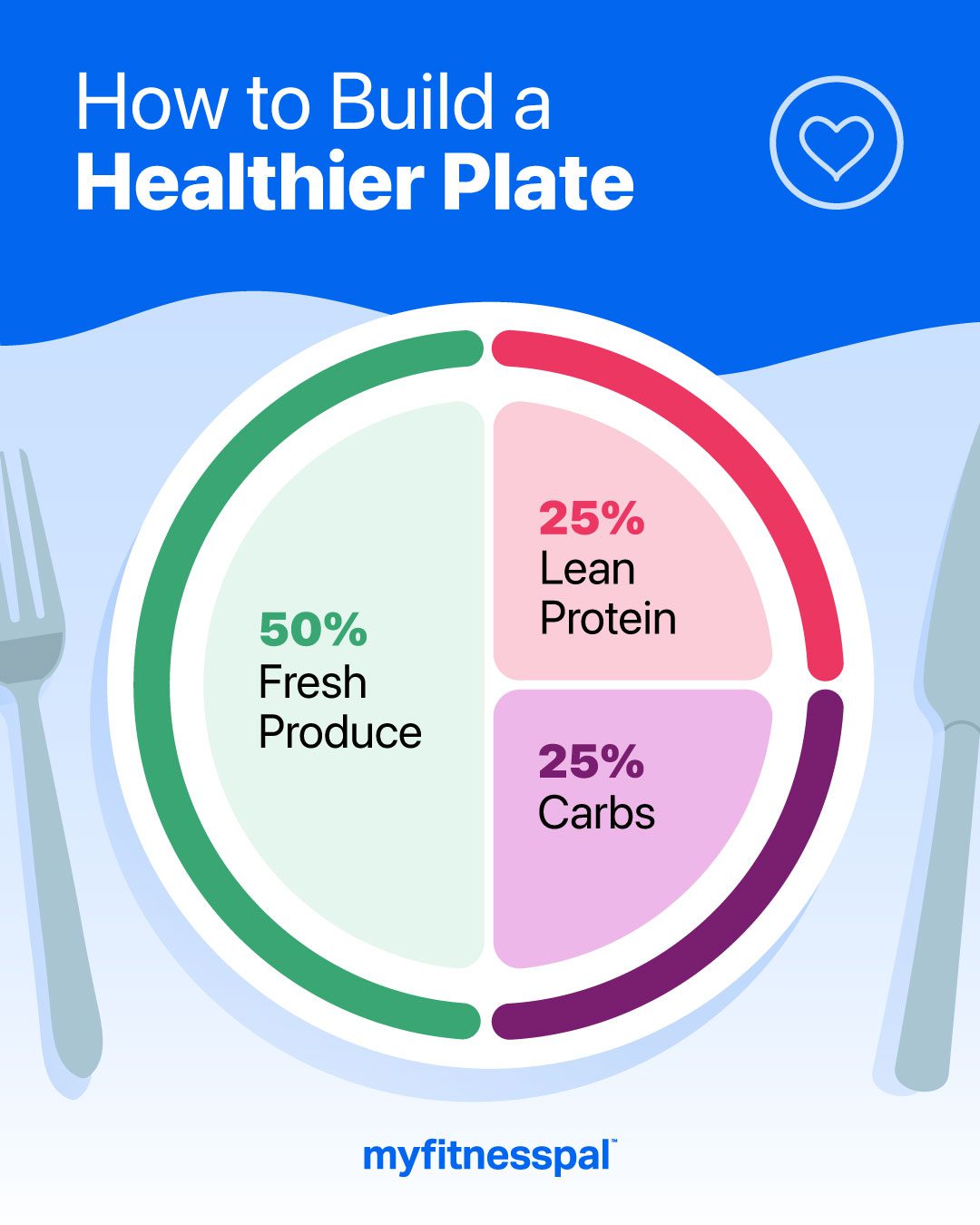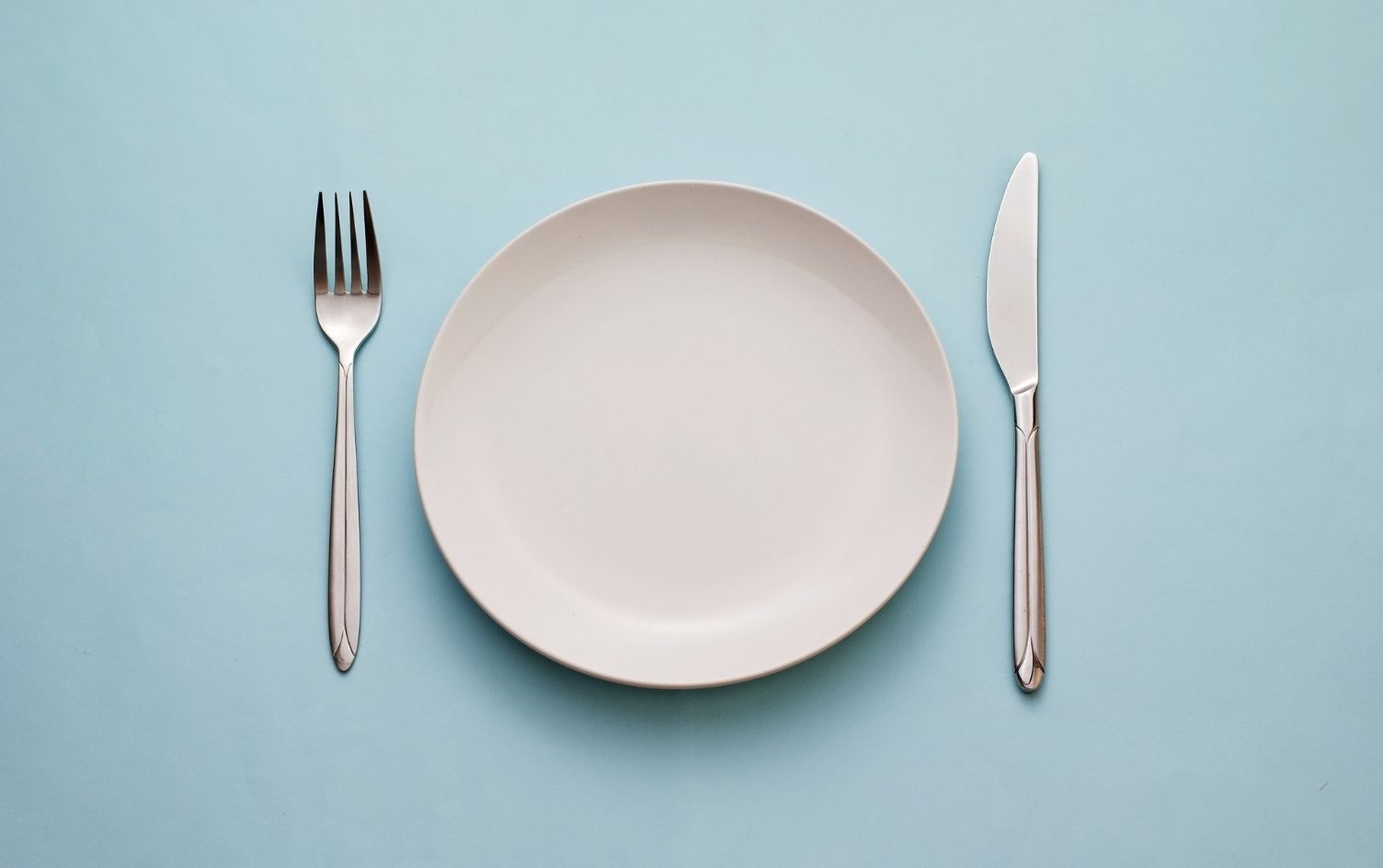Eating healthy doesn’t have to be complicated, and it usually doesn’t require a complete diet overhaul. In fact, you’re probably doing a lot of things right already! Sometimes it takes just a few little tweaks to get you on the right track, starting with something you utilize every single day: your plate.
Building a healthy plate is as easy as making a few smart swaps and healthy additions to get the most nutrition out of your meals, while still enjoying your favorite foods.
Let’s get started!
ELEMENTS OF A HEALTHY PLATE
My number 1 go-to for building a healthy plate is to put a fresh focus on produce. Making half your plate vegetables is key for building a plate that is healthy, satisfying and nutritious. But that’s only half your plate! The remaining two quarters are important, too. These are reserved for lean protein, healthy fats and high-fiber carbohydrates.
Are you ready to build your healthy plate?

FRESH PRODUCE
Making half your plate produce ensures you’re getting tons of nutrients and fiber to fill you up and keep you satisfied. Veggies are chock full of vitamins, minerals, antioxidants and phytonutrients. By making the base of your plate produce, you add a ton of volume, without a lot of calories. Choose a variety of veggie colors each day for balanced nutrients and eat the rainbow!
Once you have your veggies piled high, it’s time to add a little fun, flavor and lots of nutrients to the other side of your plate.
Here’s how:
HIGH-FIBER CARBOHYDRATES
I like to call this quarter of the plate my “carb corner” and I stack it with beans and legumes, whole grains, high-fiber breads, corn tortillas for tacos, bean-based pastas, starchy veggies (like sweet potato and squash) and other carbohydrate favorites. This is the place to focus on fiber, since carbs that are higher in fiber are the healthiest options and play an important role in weight loss, gut health, blood sugar regulation — even your mood!
High-fiber carbs are also much more nutrient rich than refined carbohydrates, containing higher levels of protein, vitamins, minerals and other trace nutrients.
LEAN PROTEIN
The other quarter of your plate is for your protein source. Protein takes longer to digest than carbohydrates, so it’s super satiating and important for staying full and satisfied. Protein may even help suppress appetite and prevent food cravings. This makes getting in some protein at each meal a great strategy if you’re trying to manage your weight.
But protein isn’t all about weight loss, it’s needed for building muscle, making hormones and enzymes that help with digestion, and supplying oxygen to body cells. It’s also super important for building bones, cartilage and skin!
Aim to fill 1/4 of your plate with healthy, lean sources of protein such as fish, chicken and turkey, eggs, low-fat milk and yogurt, cheese and lean cuts of meat. And don’t forget beans, nuts and seeds — they contain protein, too!
HEALTHY FATS
Adding healthy, plant-based fats to your meals is a great way to add staying power (and flavor!). Your body (and especially your brain!) need healthy fats to thrive. If you don’t get enough fat, you could experience dry skin, hair loss or a weakened immune system. Fat also helps the body absorb vitamins A, D, E and K. These vitamins are fat-soluble, which means they can only be absorbed with the help of fats. Dietary fat is also a source of essential fatty acids, which are a special type of fat our body can’t make.
Plant-based fat sources are the most healthy and include avocado, nuts/nut butters, seeds and olive oil. These foods are high in monounsaturated fats and chock-full of vitamins and minerals, so you’re getting an extra boost of nutrition when you use them in place of saturated fats like butter or sour cream. Adding plant-based fats to your plate is as easy as tossing your green salad with an olive oil vinaigrette (rather than ranch) and sprinkling on some chopped almonds (rather than cheese). Avocado is one of the most versatile plant-based fat sources: Mash it up and spread it on toast like butter or top off your baked potato with guacamole rather than sour cream.
Avoid partially hydrogenated oils, which contain unhealthy trans fats. These can contribute to heart disease and increase inflammation in the body.
CLICK TO TWEET THIS ARTICLE > Not sure what elements go into healthy eating? @MyFitnessPal has got you covered! A registered dietitian shares her top tips for building a healthier plate at mealtime! #myfitnesspal.
WHAT DOES A HEALTHY PLATE LOOK LIKE?
Now that you know which foods to put where, you can start building your own healthy plate!
Here are a few “healthy plate” examples to get you started:
BREAKFAST
- 2 eggs scrambled with onions, peppers, spinach and tomato, topped with salsa and avocado. Serve with 1 slice of whole-wheat toast and 1 cup of blueberries.
- A green smoothie made with unsweetened almond milk, a few handfuls of baby spinach, 1 cup of frozen berries, hemp seed (for protein) and flaxseed (for healthy fat).
- Slice of whole-wheat toast spread with smashed avocado, sliced tomatoes and 1 fried egg. Served with 1 cup of mixed berries.
LUNCH
- Large spinach salad topped with tomato, cucumber, roasted beets, artichoke hearts, chickpeas and feta cheese. Add some roasted chicken or salmon for protein and toss with a vinaigrette salad dressing.
- Black bean soup served with a green salad tossed with vinaigrette dressing.
- Grilled chicken breast atop sauteed brown rice, grilled peppers, onions, tomatoes and mushrooms. Serve with salsa and sliced avocado.
DINNER
- Protein-rich lentil pasta tossed with marinara sauce and sauteed veggies. Serve with a side salad.
- Slice of mushroom and spinach pizza served with a big Greek salad.
- Grilled teriyaki salmon served with lemony quinoa and kale sauteed in garlic and olive oil. Serve with 1 cup of frozen grapes for dessert.
THE BOTTOM LINE
Building a healthy plate doesn’t have to be complicated, it just takes practice! Using plate portioning can go a long way toward helping you eat healthier long term. It allows for balance and flexibility, helping you incorporate the foods you want with the foods you need to stay full and satisfied.
Unlock an experience that’s like having a dietitian, trainer and coach — right at your fingertips. Go Premium for expert guidance and exclusive tools that will help you reach your personal health goals.




